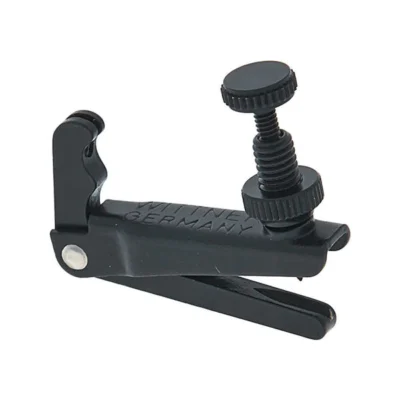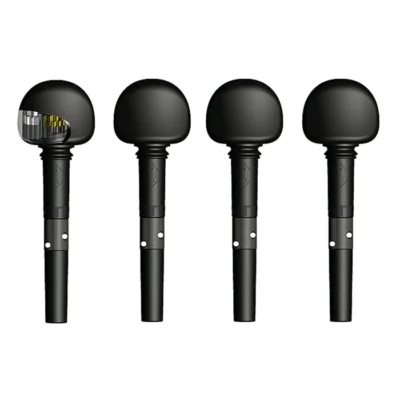A simple guide to using violin fine tuners
Ever wondered what those small metal screws in your tailpiece are, how they work, and why some violins have less than four? Violin fine tuners are a relatively new invention from the early 1900s that allow violinists to adjust the pitches of the open strings quickly and easily. Fine tuners offer easy tuning ability but do come with some drawbacks, such as adding weight or a potential buzz to your instrument.
A full set of fine tuners is often found in beginner-level violins. However, as violinists progress or purchase finer instruments, typically you will only see one fine tuner on the E string.
Many violin tailpieces come with built-in fine tuners, especially for student-level violins. However, if yours does not, do not fret. I will teach you how to install them into your instrument easily.
Keep reading to find out how and when to use fine tuners, how to install them, and what purchase options you have!
My Top 2 Best Fine Tuners for Violin
For me, the best violin fine tuner is the Wittner Long Lever fine tuner. It’s a cheap but quality product. I believe it makes it so popular! The next product of my choice is the set of planetary pegs, also from Wittner. It’s definitely worth trying out if you would prefer to resign from all 4 fine tuners in your violin.
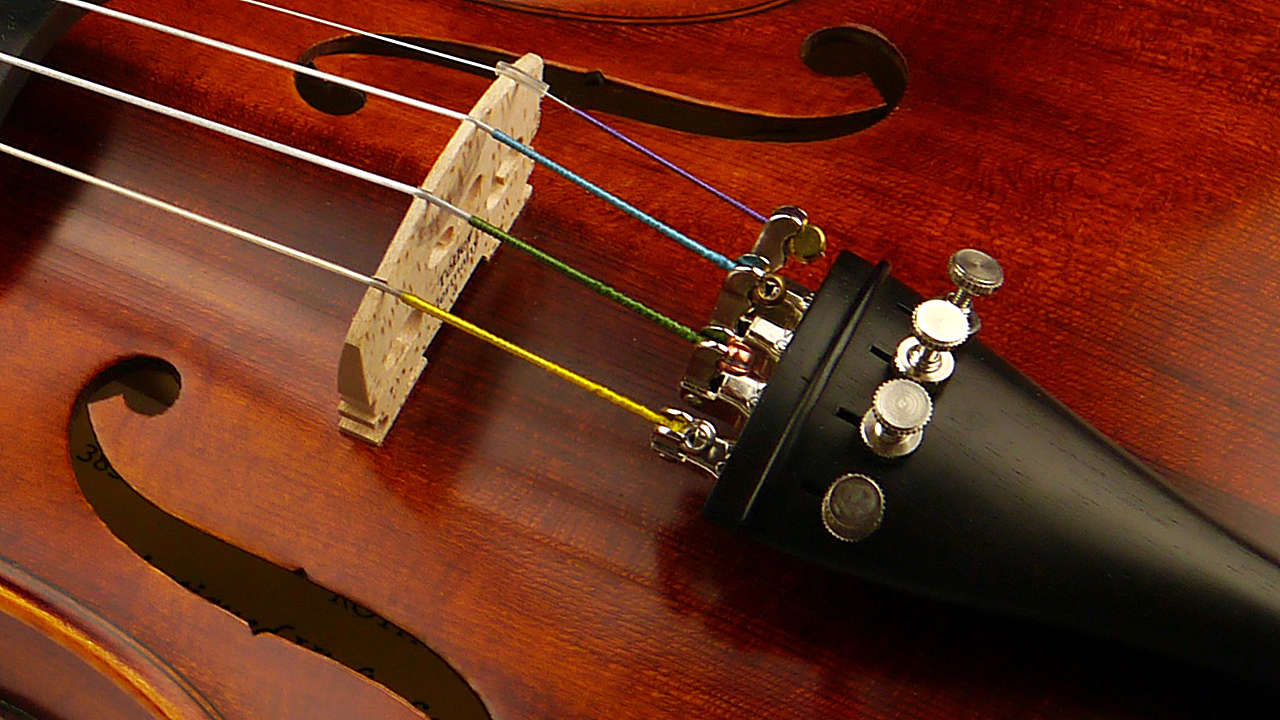
What Is a Fine Tuner for Violin?
Violin fine tuners are small metal screws attached to the top of the tailpiece to help tune the instrument in smaller increments. Fine tuners allow the violinist to change the pitch of the strings quickly and with little effort. Turning them clockwise increases the pitch while turning them counter-clockwise lowers it.
Beginners often have all four attached to their tailpiece, while professionals with nicer instruments only have one for the E string or none at all. They have learned how to manipulate the pegs quickly, which is a sign of professionalism.
Have violins always had fine tuners on them?
No, fine tuners were created to make tuning easier once steel strings became the standard type of string. Originally violin strings were made out of gut strings and when steel strings gained popularity over gut strings, the standard tuning mechanism changed from using only pegs to using pegs and fine tuners.
Gut strings are extremely stretchy so the pegs worked perfectly to tune them. But since steel strings are not stretchy and only require a small distance to tune, it’s more strenuous to tune strings, especially the E string, accurately using only the peg.
What is the difference between pegs and fine tuners?
The difference between the pegs and fine tuners is that pegs are typically wooden, located at the scroll, and can change the pitch of the string drastically. Fine tuners, on the other hand, are metal, located at the tailpiece, and adjust the pitch only slightly.
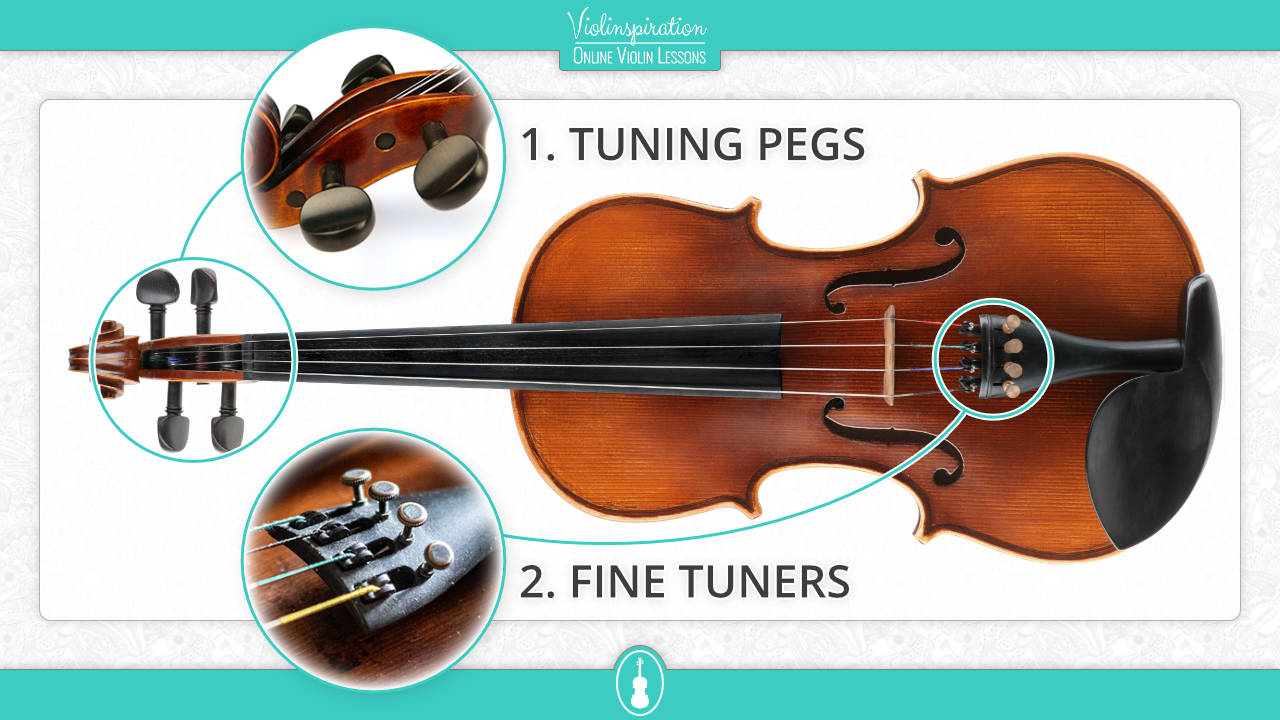
Violin Pegs
Pegs are great when your string is wildly out of tune or if you cannot adjust the note anymore with just the tuners.
If you don’t have fine tuners on your violin or the strings are extremely out of tune that you need to use the pegs, check out my simple guide to tuning with pegs. It requires a little more work than the fine tuners do, but with my instruction and a tuner, you can do it!
Violin Fine Tuners
Fine tuners are much easier to use than pegs. They do not slip or require any force to turn them. Often one or two full turns will alter the string intonation enough to notice a difference. Turning them to your right makes the strings tighter and thus increases the pitch. Turning them to your left decreases the pitch.
There will come a point where you cannot turn them anymore. If a fine tuner is out of turns, you will notice it will either be at the base of your tailpiece unable to turn any more clockwise or super loose, unable to turn any more counter-clockwise. When this happens, just turn it enough to get back to a neutral position and then adjust the pitch using the pegs.
Geared pegs
There are also geared pegs inside that allow violinists to turn pegs as if they were fine tuners. These are fitted to the pegbox, so you do not have to rely on the friction between the peg and the pegbox to keep the violin in tune. You will be able to turn the pegs very easily without any force and the pitch will change the same amount per turn as it would a fine tuner. Some great options for pegs with gears are made by Wittner or Knilling.
A drawback of this solution is that you have to turn such a geared peg a lot before the newly inserted string is at the right pitch.

What are the pros and cons of using fine tuners?
The biggest pros of using fine tuners are that they are easy to use, quick and reliable, and adding them to an instrument is relatively inexpensive and also easy to install. A few downsides to adding them are that they shorten the after-length and they can add a potential buzz to the instrument.
My overall recommendation is to start out with a violin that includes fine tuners, as they eliminate the difficulty of tuning with pegs.
6 Tips for Using Violin Fine Tuners
1. Turn the screw clockwise to get a higher pitch
If you are tuning your violin and the pitch of the open string is too low (it’s too flat), turn the screw clockwise.
2. Turn the screw counterclockwise to lower the pitch
When you are tuning your instrument and the open string is too sharp (the pitch is too high), turn the screw counterclockwise.
3. For a bigger adjustment combine using pegs and fine tuners
If you cannot turn the fine tuners anymore or you need a bigger adjustment, use also the pegs. Start by pulling the pegs towards you to loosen them. Next, turn the fine tuner in a way that it’s in the middle – you can turn it in both directions more or less the same. Then, try to tune the string using a peg and when you’re close to the target pitch, adjust it with the fine tuner.
4. Make sure your fine tuners are not causing a buzz
If you notice a buzz when playing your instrument, check to see if you have a loose fine tuner first. You might be able to just tighten the screw or the adjusting nut a little to get rid of the buzz. You might want to take the instrument to a luthier if you can’t find the source of the buzz.
6. Do not mix ball and loop ended strings on fine tuners
If you have fine tuners made for strings with a ball end, do not take the ball off and hook the loop onto the other kind of fine tuner, or vice versa. The increased tension and lack of plastic protector will likely make the string break.
What Is the Best Fine Tuner for Violin?
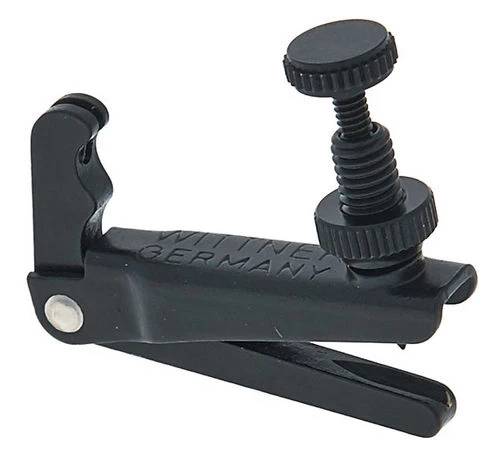
My recommendation is the Wittner Long Lever fine tuner. They are lightweight, inexpensive, easy to install, and good quality. They do not affect sound quality too much, which is a major bonus to buying them.
Other great options are:
Wittner Uni “Piccolo”
This one is silver, allows you to keep proper string length, and uses ball-end strings. It is a little bit more expensive but still affordable.
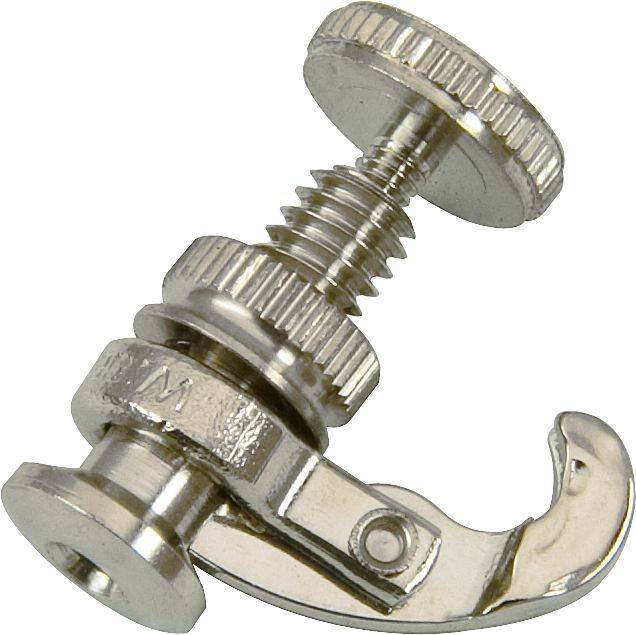
Wittner Uni “Piccolo”
Support us for more FREE content No extra costs for you Recommended by Violinists
Titanium Wittner-style
This tuner is super lightweight, hypo-allergenic, gun-metal colored, and is easy to install. The lightweight property makes it extremely appealing because it will not add much mass to the tailpiece, allowing the natural tone and resonance of your instrument to ring out. However, it is more expensive at about $30 per tuner.
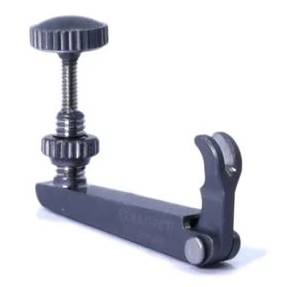
Titanium Wittner-style
Support us for more FREE content No extra costs for you Recommended by Violinists
Hill-style Adjuster
These hill-style tuners come either as either black or nickel-plated. They are for loop-end strings only but are inexpensive at around $5. They can also fit some viola tailpieces for use of the A string. You can find these fine tuners on johnsonstring.com.
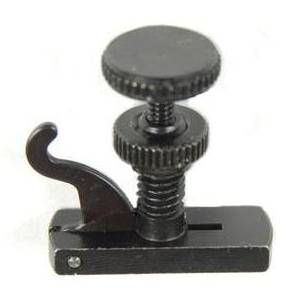
Götz Tuner with larger screw
This fine tuner has a black body and is made for loop end E strings. The screw is relatively larger than normal-sized screws, which allows for tuning accuracy and easier screw threading.
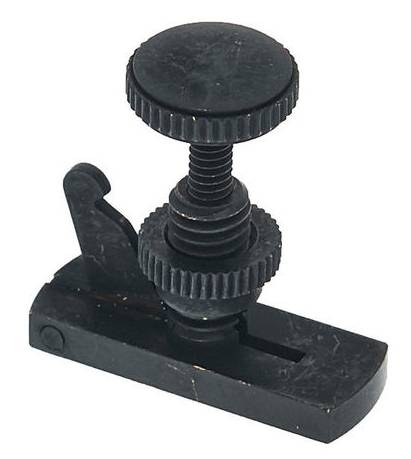
Götz Tuner with larger screw
Support us for more FREE content No extra costs for you Recommended by Violinists
Mberg Ultra Light Titanium for Viola or Viola
This longer tuner is made of titanium, which is light and will not dampen the natural string vibrations as much. It is meant for ball-end strings for violin E and viola A strings. The adjusting screw is gold-plated, which adds fanciness. You can find these fine tuners on concordmusic.com.
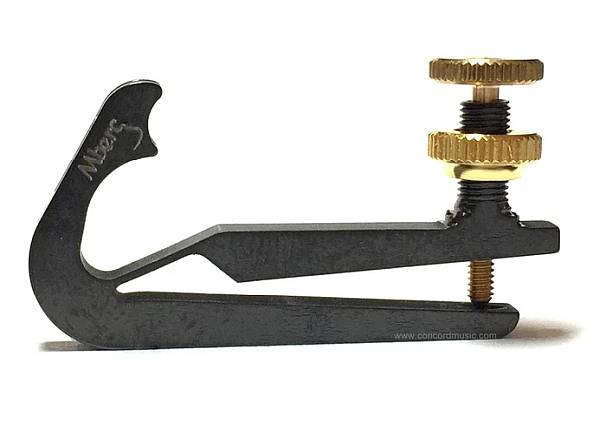
Wittner Finetune Geared Peg set
The geared pegs are a great option if you find tuning to be difficult or want to learn how to use your pegs faster and easier. These are non-slip, light, friction-less, and extremely accurate to tune. They are definitely an investment at about $70-150 for a set. Installation by a professional is also recommended.
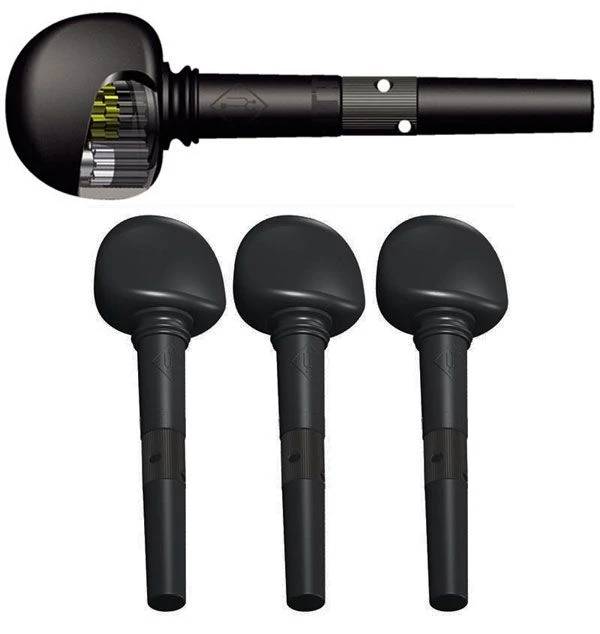
Wittner Finetune Geared Peg set
Support us for more FREE content No extra costs for you Recommended by Violinists
Knilling Planetary Geared Peg set
Another great geared peg set is made by Knilling. These are extremely similar to the Wittners, except that the Knilling has a 4:1 gearing ratio whereas the Wittner has an 8:1 ratio. Both are extremely precise and will give you the benefits of an accurate pitch with easy tuning ability. Knilling has more options for styles from Rosewood to basic synthetic. The price is also similar to Wittner, ranging from about $70-150 plus installation charges.
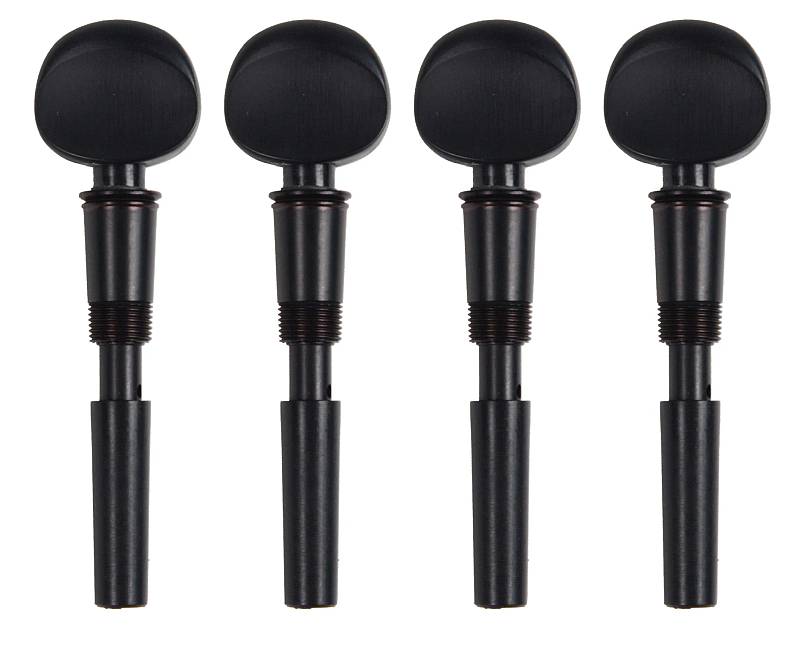
Knilling Planetary Geared Peg set
Support us for more FREE content No extra costs for you Recommended by Violinists
How to Install a Fine Tuner in 8 Steps
Most violins come with fine tuners but if you would like to install different ones or add them in case your violin does not come with them, here’s how. The following steps are for tailpieces without built-in fine tuners.
Step 1: Purchase the right kind of fine tuners for your strings
When purchasing fine tuners, take into account the kind of strings you use. If they have a ball at the very end of the string, purchase fine tuners for ball-ended strings. If they have a loop, then make sure you use a loop-end fine tuner.
Step 2: Take the top adjusting and tightening nut off
In the fine tuner itself, each comes with three parts total: the adjusting screw which you turn to change pitches, the tightening nut which holds the parts together, and the screw barrel which is the base of the fine tuner. In this step, take off the top adjusting and tightening nut off by unscrewing it to the left. You will be left with the screw barrel.
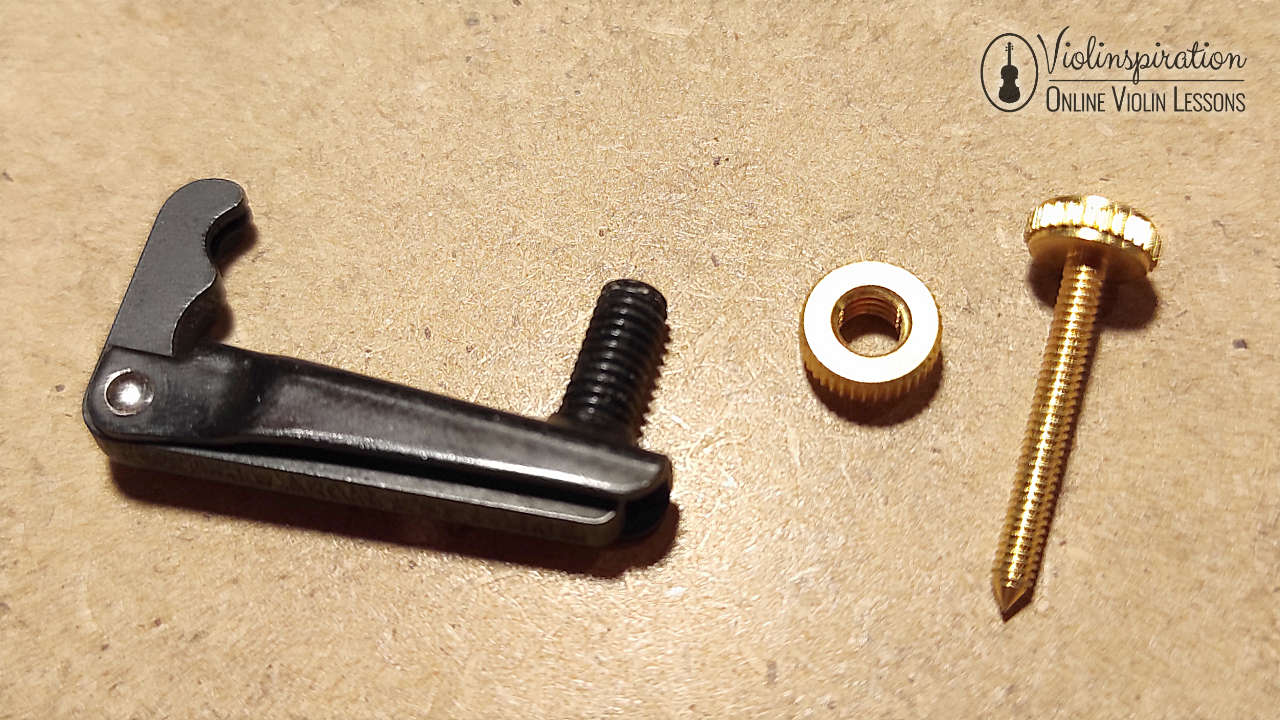
Step 3: Loosen the peg of the desired string so you have access to the tailpiece
Simply turn the peg towards you to loosen the string so you can put the fine tuner in.
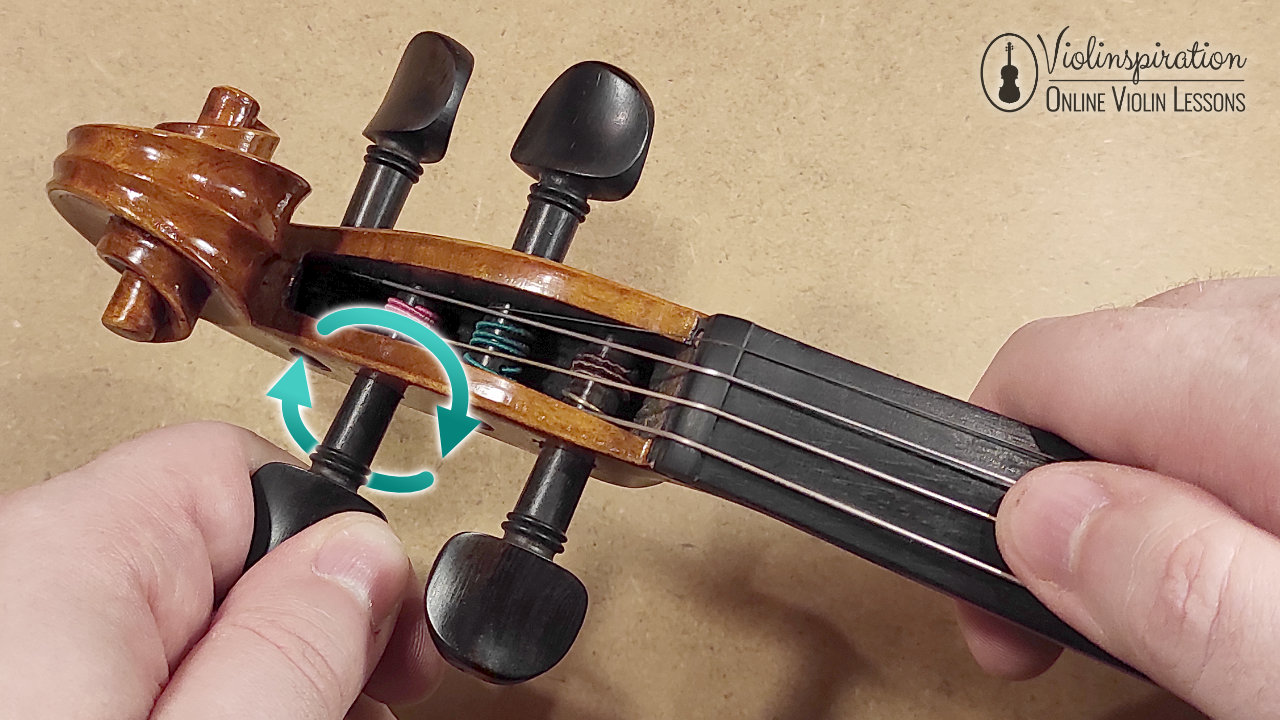
Step 4: Place the screw barrel into the tailpiece hole
Make sure you are putting the threaded side into the hole from underneath so that the other parts can go on top of the tailpiece. Consider putting down a cloth on your violin so your instrument does not get scratched.
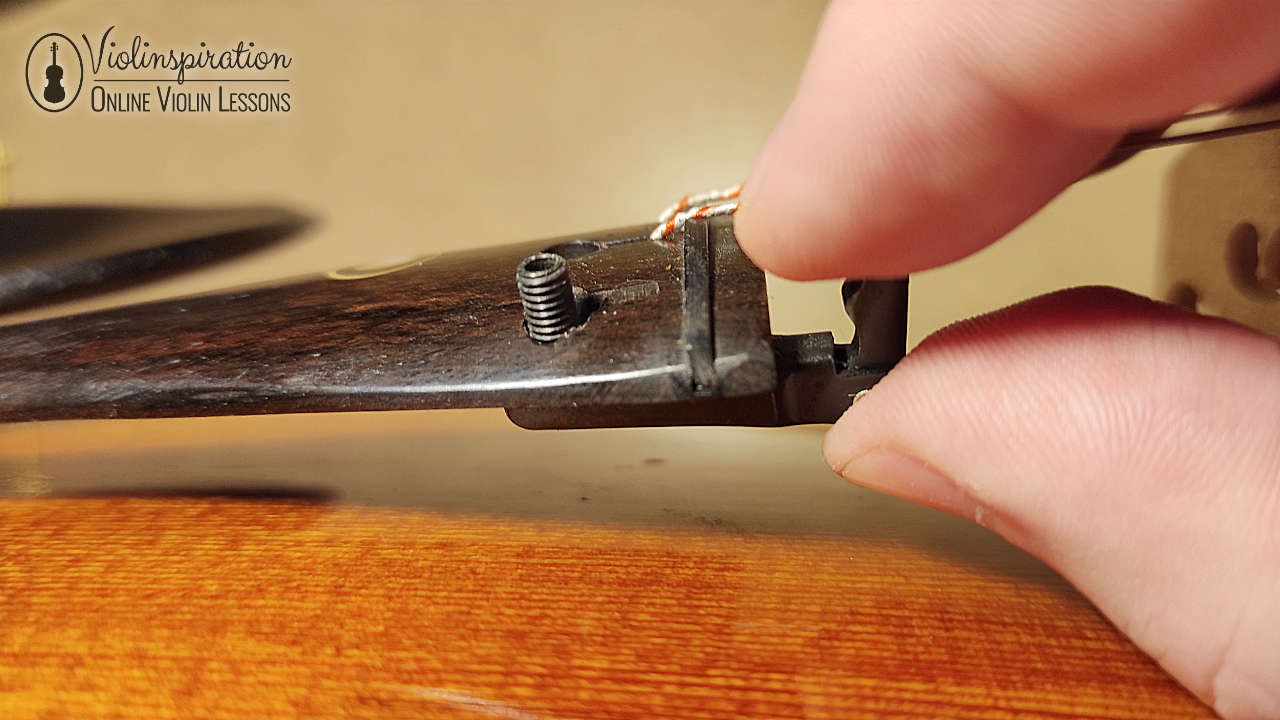
Step 5: Add the mounting nut back
When you add the mounting nut, get it as tight as you can to the tailpiece. This will help lessen the chance of you having a buzz. However, over-tightening can cause the wood to weaken.
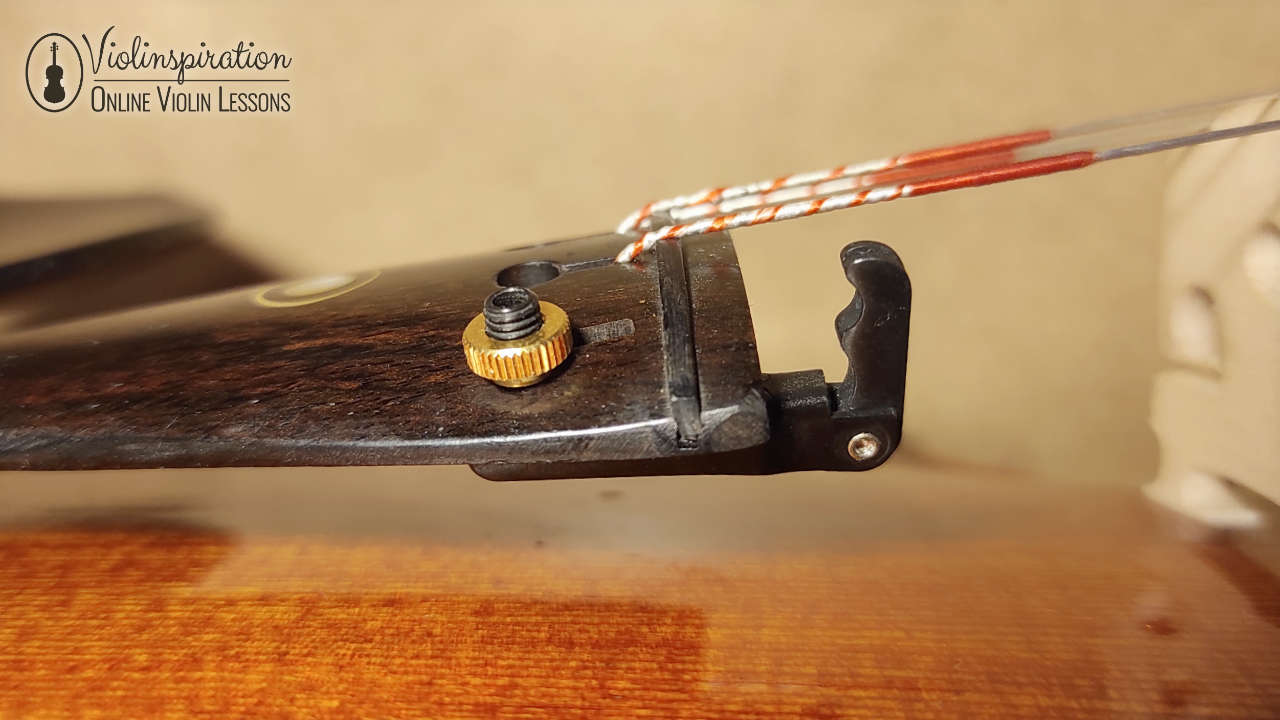
Step 6: Add the tuning screw back about halfway
Add the tuning screw back but only put it in halfway so you can add the string next.
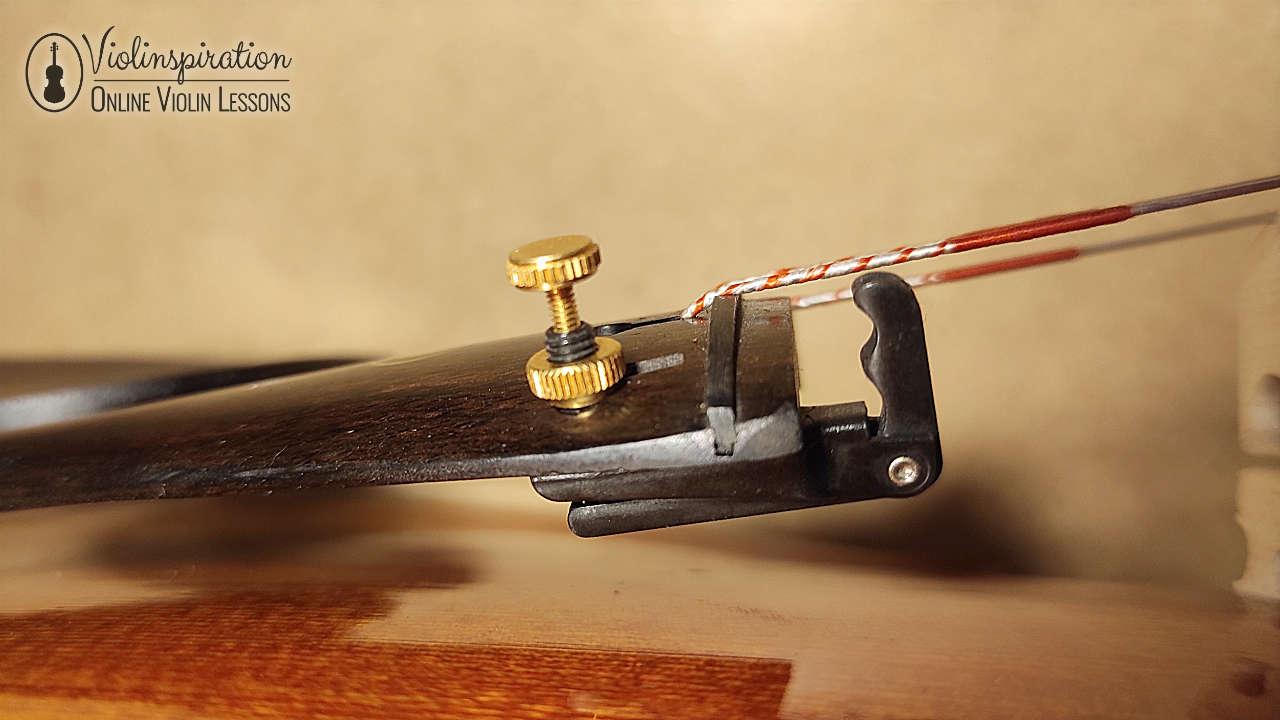
Step 7: Thread the string onto the fine tuner
If you have a ball end string, make sure the ball is inserted vertically. If you have a loop end string, this will be easy to just hook it onto the metal piece.
If your loop-ended string came with a plastic protector, make sure to use it!
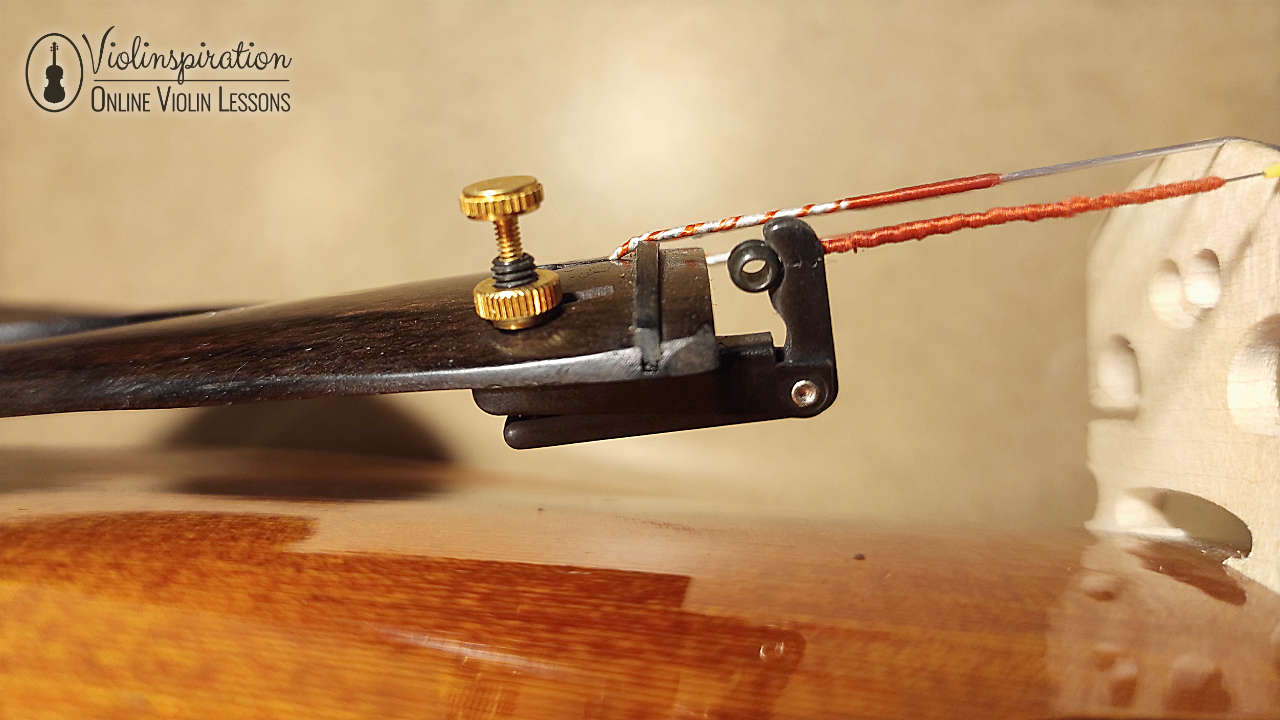
Step 8: Tighten the string using the pegs and tune with the fine tuners.
Keep the tension of the string so the string doesn’t come out of the fine tuner. Use the peg to tighten the string back. Make sure the string is in the correct position on the bridge and the nut. Tune the string to be about a note lower than you intend so you can continue tightening the string with the fine tuner. This will decrease the string length by the tailpiece.
FAQ
Should I use fine tuners on my violin?
Yes, you should use fine tuners if you are a beginner or just want to tune quickly. In such cases, violin fine tuners are a great option. They require very minimal physical effort and keep the violin strings well in tune.
How many fine tuners should a professional violin have?
Many professional violinists use one fine tuner or none. If musicians do have any, it will likely be on the E string. Using the pegs to tune is a sign of maturity and professionalism.
Do fine tuners affect violin sound?
Yes, fine tuners affect violin sound but just a little bit. Any additional part, in this case made of metal, adds weight to the violin, which lowers sound production. They can also rattle if a part is loose.
Fine tuners also shorten the string after-length, which can affect sound negatively. Tailpieces with built-in tuners affect the sound less than when you add fine tuners to a tailpiece without them. However, the overall sound difference is minimal in comparison to the effort that pegs require.

